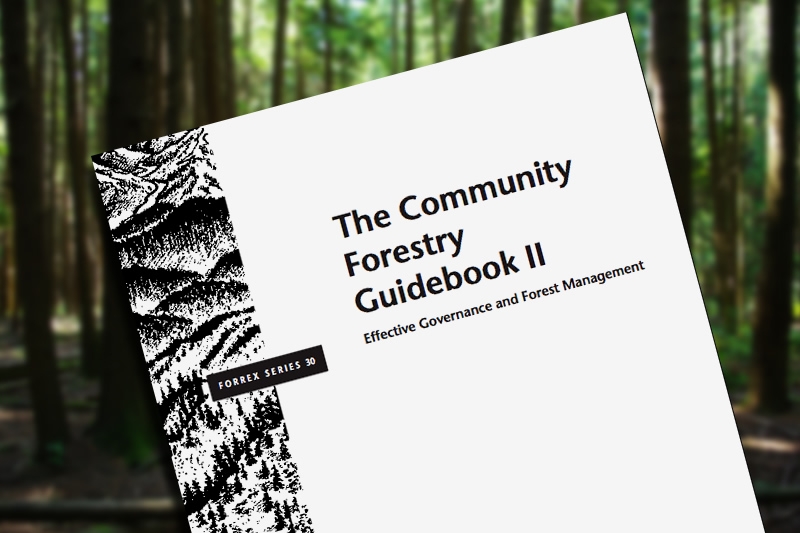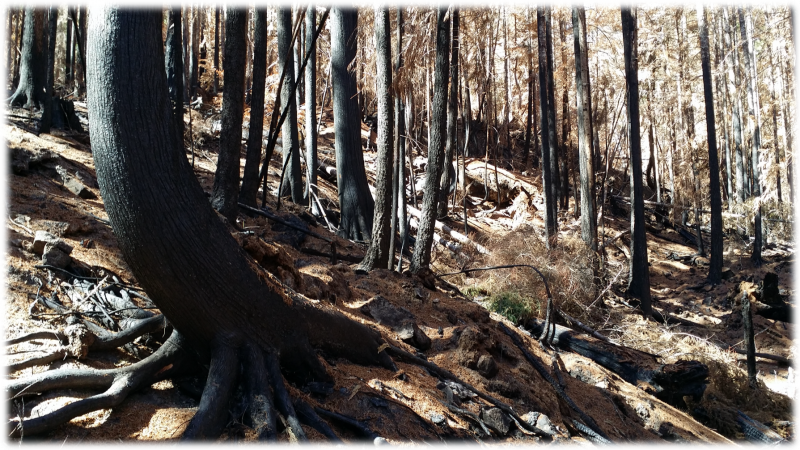Link to Guidebook II
Abstract
In the face of many challenges related to a range of ecological, economic, and social factors, a growing number of British Columbia’s forest-dependent communities see community forests as a way to stabilize their rural economies. By integrating cultural, ecological, economic, and social sustainability, community forests promote local livelihoods, encourage community participation, and foster long-term environmental stewardship. Since its introduction in 1998, the Community Forest Agreement Program has expanded significantly and now 47 Community Forest Agreements operate province-wide, with another 11 communities and First Nations engaged in the application process. Along with this growth, community forest organizations have increasingly requested information, tools, and techniques specifically related to this unique tenure. This guidebook addresses several governance and forest management information priorities identified by BC Community Forest Association members.
Part One examines some of the basics of community forest organizational governance and policy. Topics include developing suitable foundation statements; choosing an appropriate legal structure; primers on organizational governance and community forest policy; defining board of directors’ governing principles, roles, and responsibilities; recruiting and orienting board members; the role of committees; the importance of management terms of reference; the basics of contract tendering and profit distribution policies; and experiences and lessons learned by community forest boards and managers around the province.
Part Two explores various aspects of operational community forest management. Topics include spatial data and mapping tools; understanding goals, values, and objectives; area based planning for values, and ecological goods and services; adapting to climate change; and determining whether the community forest’s allowable cut fits its needs.
keywords: allowable annual cut; area-based planning; BC Community Forest Association; board governance; board recruitment; climate change; committees; community forestry; community forest policy; contract tendering policy; forest management; foundational statements; governing principles; legal structures; lessons learned; mapping tools; profit distribution policy; sustainability; terms of reference.
Preface
In 2004, the BC Community Forest Association and FORREX jointly developed “The Community Forestry Guidebook: Tools and Techniques for Communities in British Columbia” as FORREX Series No. 15. This publication captured the collective wisdom and lessons learned from the handful of community forest organizations in operation at that time.
Eight years later, and the number of community forests in British Columbia has grown substantially. Along with this growth, community forest organizations have increasingly requested specific information, tools, and techniques related to the size and long-term nature of the current Community Forest Agreement tenure. From organizational governance, forest legislation, regulations and policies, government programs and funding, markets and pricing, to forest management and planning software, community forest organizations expend great effort to secure and adapt existing tools to fit their unique situations.
In “The Community Forestry Guidebook II,” we have tried to address the governance and forest management priorities identified by BC Community Forest Association members.
In Part One, we present twelve chapters that examine some of the basics of community forest organizational governance and policy. Organizational policy is a very large field, with many resources and experts who specialize in governance. As such, this section of the guidebook is by no means definitive. Our approach was to focus strictly on the priorities our membership identified through a survey. Over time, we will develop additional targeted resources on organizational issues.
In Part Two, we present seven chapters on various aspects of operational community forest management. These pieces include information on spatial data, mapping, and allowable cut computational tools; area-based planning for values, and ecological goods and services; and adaptation to climate change.
Both parts draw on the vast knowledge and experience of British Columbia’s community forest managers and boards of directors. By combining this information under one cover, we wanted to create a practical resource that existing and emerging community forest organizations can use to improve their transparency, accountability, and long-term sustainability.
Susan Mulkey and Ken Day
December 2012
smulkey@bccfa.ca, ken.day@ubc.ca
Citation
Mulkey, S. and J.K. Day (editors). 2012. The community forestry guidebook II: Effective governance and forest management. FORREX Forum for Research and Extension in Natural Resources, Kamloops, B.C. and British Columbia Community Forest Association, Kaslo, B.C. FORREX Series Report No. 30.
http://www.forrex.org/publications/forrex-series or https://www.bccfa.ca
Related Post
Wildfire Recovery in BC Community Forests Updated March 14, 2020
The purpose of this document is to provide general
Funding Opportunities for Landbase Investment in BC Community Forests Updated March 14, 2020
There are a range of funding opportunities available for



